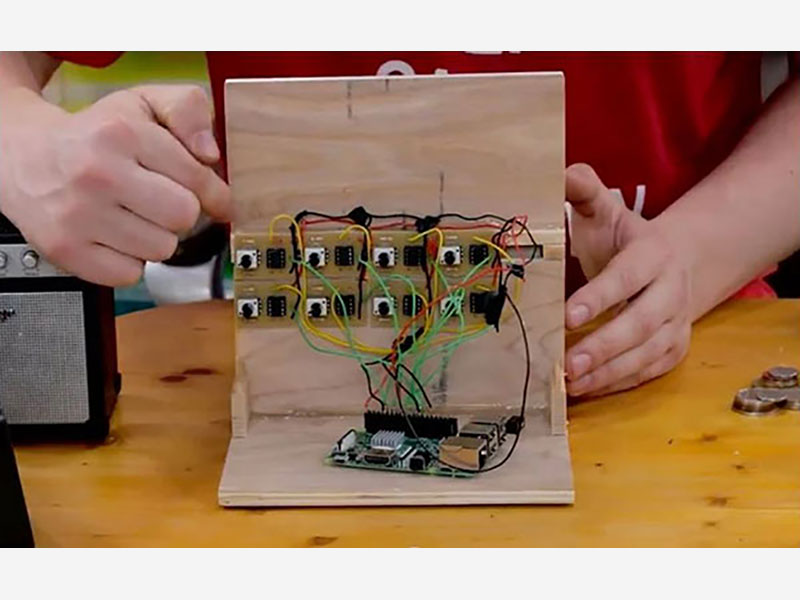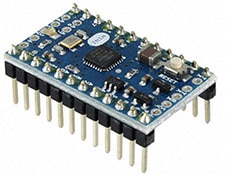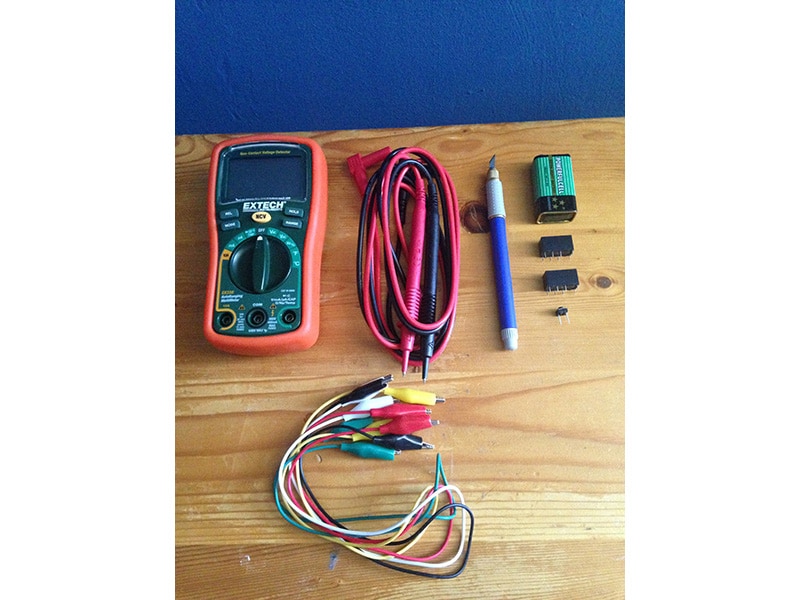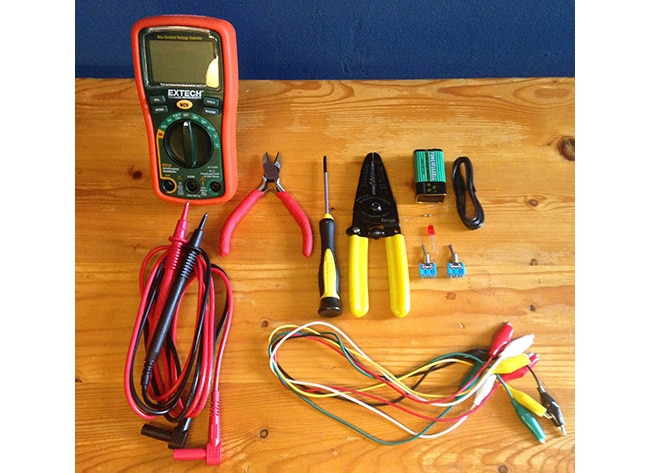Variable Resistance - Experiment 4
For those of you who missed my first three blog posts, “Taste the Power! – Experiment 1”, “Let’s Abuse a Battery! - Experiment 2”, and “Your First Circuit – Experiment 3”, I recently got the second edition of “Make: Electronics” by Charles Platt and decided to try all of the experiments presented in the book. This is my documentation of how the fourth experiment, “Variable Resistance”, turned out.
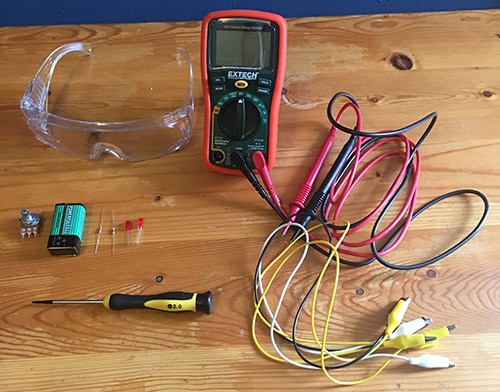
Look Inside Your Potentiometer
Here are some photos from different angles of the potentiometer I used (before prying it open):
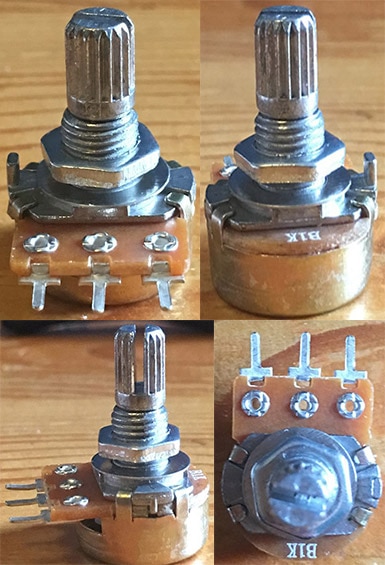
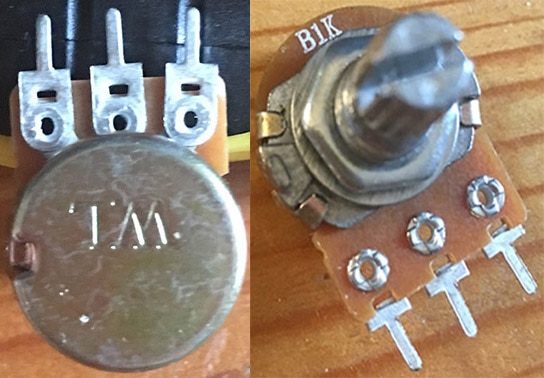
Time to open it up!
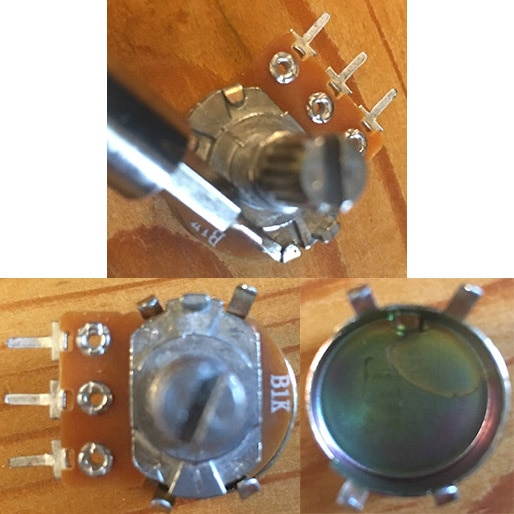
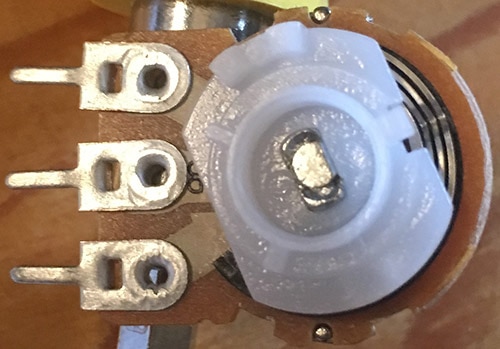
Testing the Potentiometer
Dimming Your LED
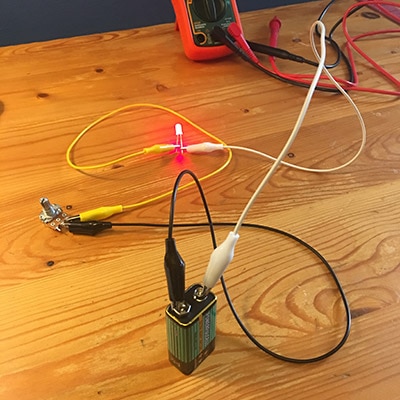 The LED that wouldn't die
The LED that wouldn't die
I did NOT manage to burn the LED. I even connected it directly to the 9 V battery but it just refused to burn.
Still, it was fun to play with the potentiometer, turning the knob and watching the LED’s brightness change as less and more current goes through it. A potentiometer isn’t polar so the LED would light up no matter which test lead was connected to the potentiometer’s terminals.
 Center and Right terminals. As you turn the shaft clockwise, the LED shines brighter.
Center and Right terminals. As you turn the shaft clockwise, the LED shines brighter.
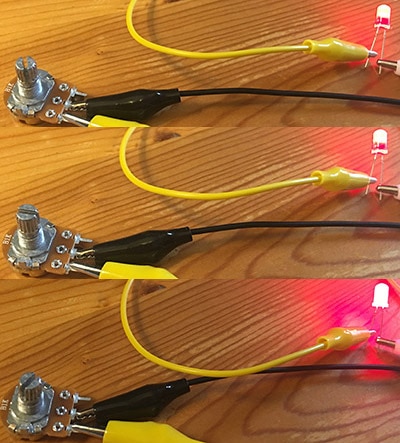 Center and Left terminals. As you turn the shaft counterclockwise, the LED shines brighter.
Center and Left terminals. As you turn the shaft counterclockwise, the LED shines brighter.
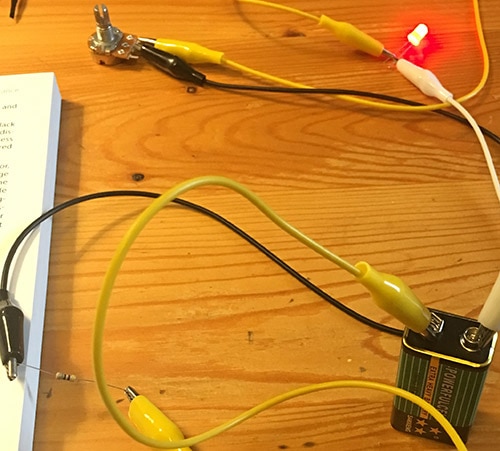 Protecting the LED with a resistor
Protecting the LED with a resistor
Measuring Potential Difference

 Measuring potential difference across an LED and a resistor
Measuring potential difference across an LED and a resistor
Checking the Current
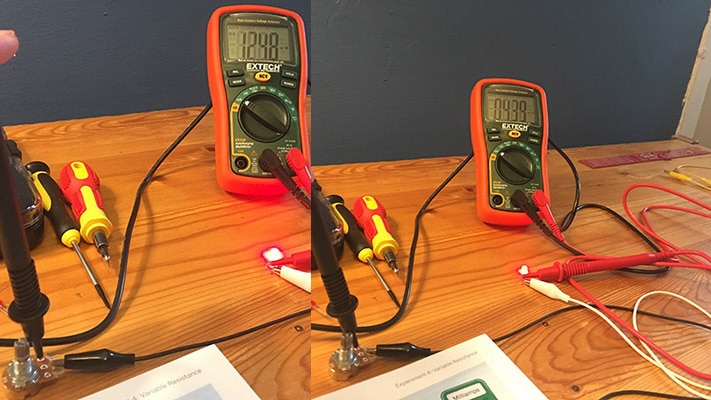
Making Measurements
Fundamentals: Series and Parallel
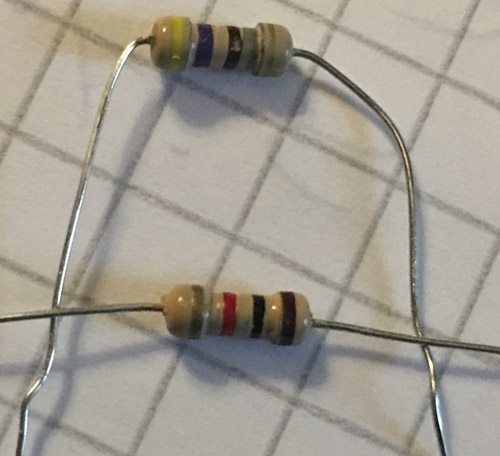 Two resistors in parallel (R1= 470 Ω, R2= 1 KΩ) offer an equivalent resistance of 319.73 Ω
Two resistors in parallel (R1= 470 Ω, R2= 1 KΩ) offer an equivalent resistance of 319.73 Ω
Of course, the measurements won’t always be what we expect, this is due to the fact that each component has a tolerance range; so, for example, a 1 KΩ resistor with a 5% tolerance may offer a resistance that is 5% away from 1 KΩ. The reading my multimeter gave of the two resistors connected in parallel shown in the picture above was 318.8 Ω.
EXTRA
The scientist introduced by the book during this experiment is James Watt. You can watch the following YouTube video to learn more about his life and experiments: James Watt – The Steam Engine.
The following resources could also be helpful in understanding potentiometers:
- The Potentiometer (video)
- How do potentiometers work and how to service them (video)
- Electronics basics—How a Potentiometer works
- Chapter 11 potentiometer of the Encyclopedia of Electronic Components Vol.1 by Charles Platt
- Parallel Resistance Calculator
You can get everything you need for this experiment from DigiKey!
If you would like to recreate this experiment yourself, you can get everything you need for this experiment from DigiKey!
- Test leads with alligator clips at each end
- Make: Electronics 2nd Edition
- Multimeter (consult the first chapter of the book to see choose the one will best fit your needs):
The multimeter I’ve been using is the EXTECH’s EX330
- 9 V Battery
- Resistor – 470 Ω (5% tolerance)
- Resistor – 1 KΩ (5% tolerance)
- Potentiometer – 1 KΩ linear
- Generic LED
- Screwdriver set (optional)

Have questions or comments? Continue the conversation on TechForum, Digi-Key's online community and technical resource.
Visit TechForum







